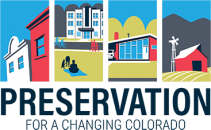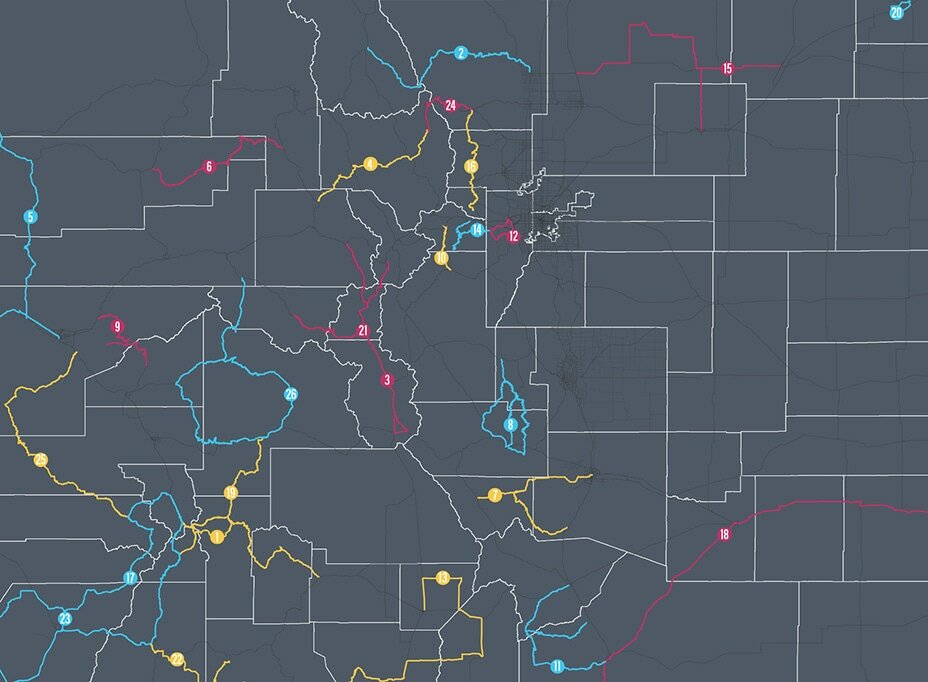While historic preservation has been shown to provide economic benefits to communities across the country, there are certain benefits that Colorado is uniquely positioned to leverage. Foremost among these are the potential benefits of heritage tourism, a unique niche in the larger tourism industry devoted to historic, cultural, or natural resources; as well as the Scenic and Historic Byways program, a state program that promotes heritage tourism along unique roadways throughout Colorado. Historic preservation programs in many of Colorado’s mountain communities helps set them apart from other ski and outdoor recreation destinations across the country.
Heritage Tourism
The benefits of historic preservation in Colorado extend beyond just preserving places that are meaningful to the history of the state and its residents. Preservation is one of the main drivers behind heritage tourism. The National Trust for Historic Preservation defines heritage tourism as “traveling to experience the places, artifacts, and activities that authentically represent the stories and people of the past and present.” The definition of a heritage tourist is broad, and includes any tourists who incorporate at least one visit to a historic site or landmark in their activities, even if their primary purpose for visiting Colorado was not to engage in heritage tourism.
According to the U.S. Travel Association, 76 percent (or 129.6 million) of the 170.4 million leisure travelers in the United States participated in some sort of cultural or heritage activity in 2013. Those visitors spent more money overall during their trips and tended to travel for longer than did non-heritage tourists. Heritage tourists were also more likely to stay in hotels, shop, dine out, and participate in a variety of activities. This same report found that, among all travelers surveyed (including both heritage and non-heritage tourists), 72 percent said that they “seek travel experiences where the destination, buildings, and surroundings have retained their historic character,” demonstrating the important role historic preservation plays in promoting all forms of tourism, not just heritage tourism.
Heritage Tourism in Colorado
Tourism (including heritage and non-heritage tourism) is big business in Colorado. Around 73.3 million overnight (43 percent) and day (57 percent) leisure trips took place in Colorado during 2015. These tourists spent over $19.1 billion on travel that year, supporting over 160,000 jobs throughout the state. In addition, tourism activities generated $1.1 billion in state and local taxes, not including property taxes. Spending generated by overnight travel in particular accounted for approximately $17.1 billion.
Current data specific to heritage tourism in Colorado was not available as of the update of this report. However, information from 2008 is available and is still valuable for demonstrating the economic impact heritage tourists generate in the state relative to other tourists. In 2008, approximately 50 percent of overnight leisure trips (11.8 million) included some type of heritage activity and so are considered “heritage tourist trips.” That year, heritage tourists spent nearly $4 billion during overnight leisure trips to the state, accounting for more than half (51 percent) of all tourist spending during overnight leisure trips. Of that $4 billion, approximately $244 million (6 percent) was spent on cultural and historic activities ($190 million on cultural activities and $54 million on historic activities).
While more recent data was unavailable, the activities Colorado visitors said they engaged in provide some clues as to the role heritage tourism plays in the state’s tourism industry. For instance, Colorado overnight leisure trips in 2015 were more likely to include visits to landmarks or other historic sites (21 percent) than the norm for all overnight leisure trips taken in the United States (15 percent). This marked an increase from 2014, when just 16 percent of trips included visits to landmarks or historic sites. In addition, 30 percent of overnight leisure trips taken had a specific interest in visiting historic places, up from 2009 when just 22 percent of trips had historic places as a specific interest. The 2015 rate was also higher than that reported nationally (27 percent). Furthermore, 21 percent of overnight leisure trips in 2015 also noted cultural activities/attractions as a specific interest on the trip. If the percentage of total spending by overnight leisure travelers remained the same as in 2008, one could assume that at least $7.2 billion (51 percent of the $14.1 billion spent by overnight tourists during 2015) was spent by heritage tourists. Alternatively, if one assumes the percentage of heritage tourists visiting Colorado in 2015 more closely matched the distribution of non-heritage and heritage tourists recorded in 2013, the figure could be closer to $10.7 billion. Either way, heritage and cultural activities are an important aspect of tourism in Colorado and spur spending by tourists across the state.

Scenic and Historic Byways
One way the State of Colorado promotes heritage tourism is through the Scenic and Historic Byways Program. Established in 1991, the program highlights the important crossover that exists between historic preservation and economic development. In this case, historic preservation plays an important role in protecting and restoring sites, buildings, and other structures that enhance the unique aspects of each of the state’s 26 byways. The program also provides a framework for regional cooperation and collaboration among a variety of state and federal agencies, local governments, economic development organizations, non-profits, and others who have an interest in promoting tourism, historic preservation, conservation, and educational opportunities along the byways. The program, part of the Colorado Department of Transportation, is overseen by a Byways Program Manager who acts as a resource for local agencies, communities, and byway organizations, serving as a conduit between these local organizations and state and federal agencies, such as the U.S. Forest Service and the Bureau of Land Management. The program manager also writes grant proposals for public and private funding of byways projects, administers federal grants, and provides technical assistance to local and regional byway organizations. Assistance for historic preservation projects comes from History Colorado, which regularly awards grants from the State Historical Fund to local governments located along Scenic and Historic Byways. In addition, the program’s focus on interpretation and education helps to build greater awareness of Colorado’s history and culture among visitors and residents alike.
According to a recent study, the state’s Scenic and Historic Byways program created a direct economic impact of $2.25 billion (not adjusted for inflation) between 2009 and 2014. This led to indirect impacts of nearly $2.26 billion for a total impact of almost $4.5 billion. The majority of the economic impacts identified were attributed to visitor spending along the byways, as opposed to capital investments in facilities and other amenities. In 2014, the direct impacts of the program generated $835 million in total economic impacts and $141 million in wages for more than 4,000 jobs (part-time and full-time). The study also quantified the economic impacts attributable to specific byways, finding the Mount Evans Scenic and Historic Byway to be the most economically impactful despite the fact that a portion of this byway is closed during winter. The Mount Evans byway accounted for around 25 percent (or $1.2 billion) of the total impacts attributed to the program between 2009 and 2014. In comparison, the average impact of a byway in the state over this period was $191.9 million. While the total economic impacts of the Scenic and Historic Byways program may seem small compared to the total economic impacts of tourism in the state (total tourist spending was $14.1 billion in 2015), the results are impressive given the limited resources available to the program, especially following the defunding of the National Scenic Byways Program in 2012.
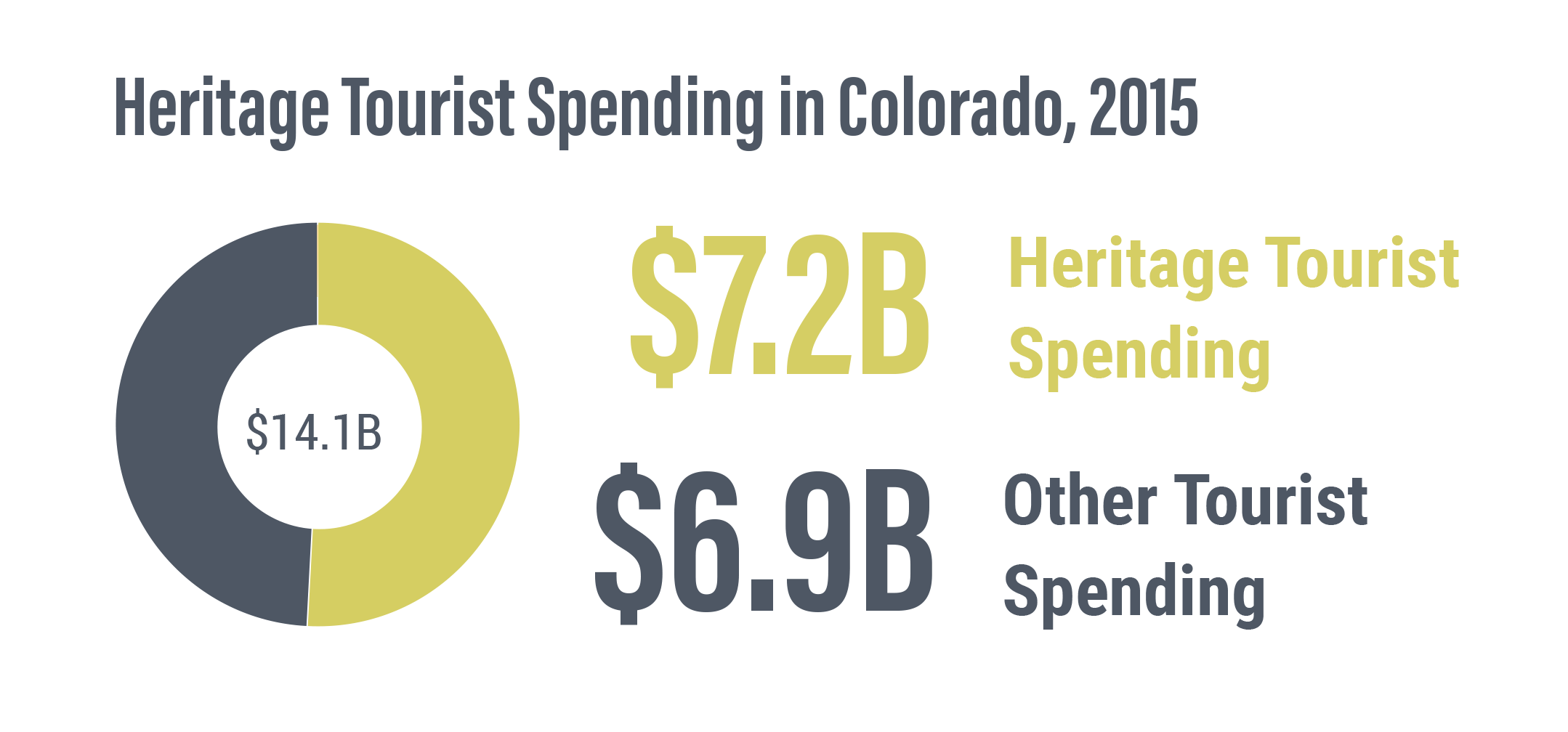 In 2014, 16% of tourists in Colorado visited historic sites. In 2015, the percentage of tourists visiting historic sites rose to 21%.
In 2014, 16% of tourists in Colorado visited historic sites. In 2015, the percentage of tourists visiting historic sites rose to 21%. 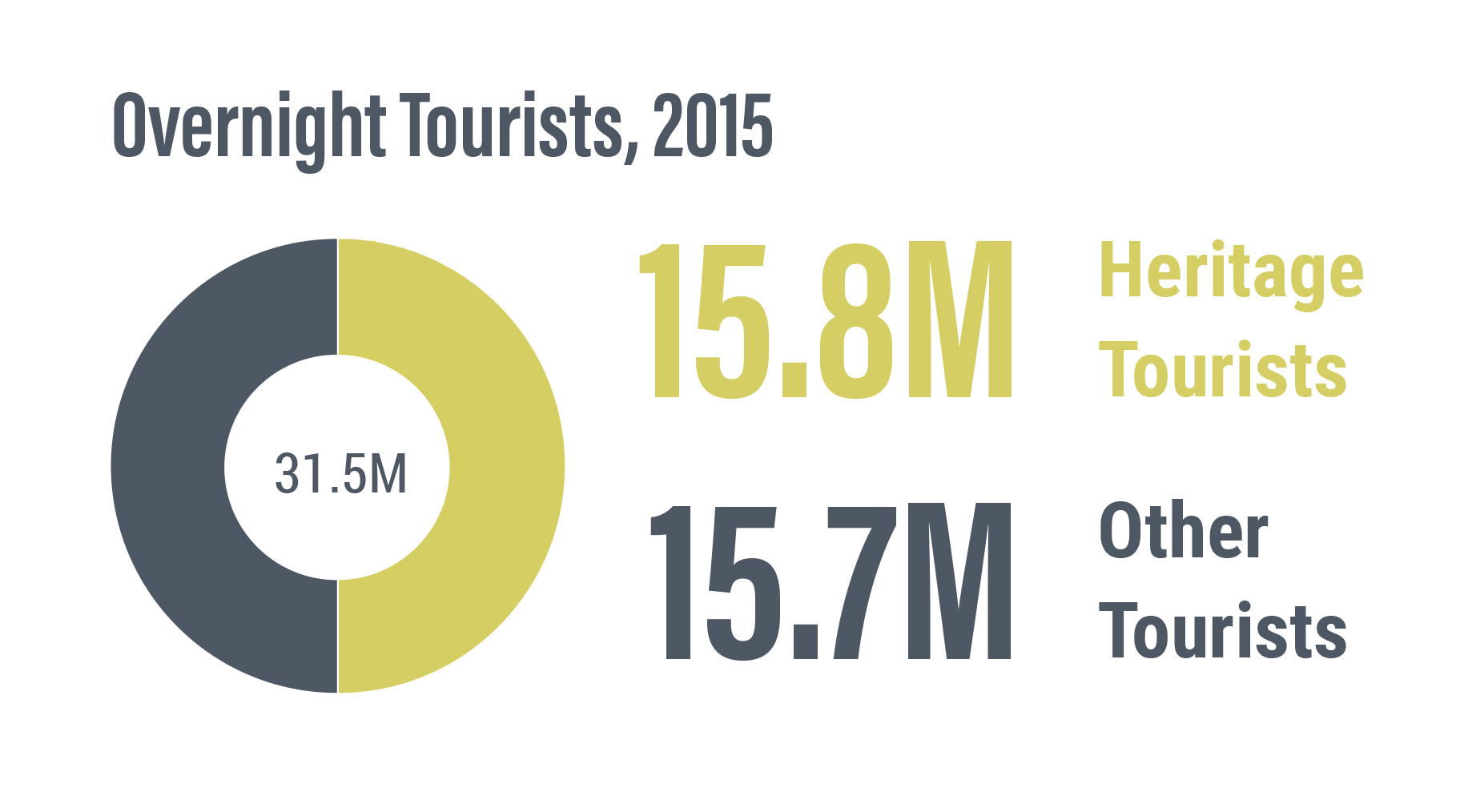 In 2015, more than half of overnight tourists visiting Colorado were heritage tourists, totaling 15.8 million.
In 2015, more than half of overnight tourists visiting Colorado were heritage tourists, totaling 15.8 million. 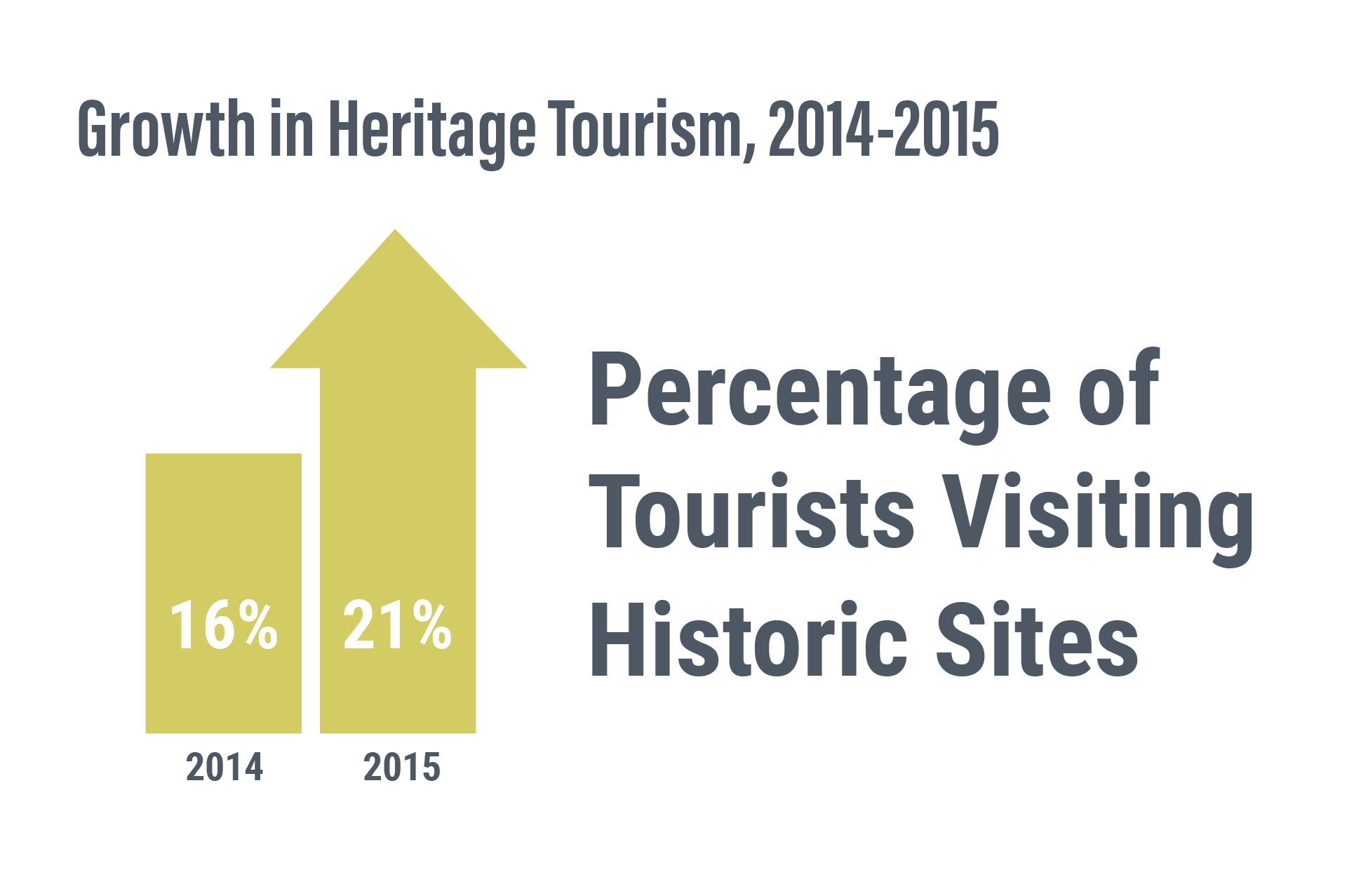 Between 2009 and 2014, the direct economic impact of scenic and historic byways in Colorado was $2.2 billion and the indirect economic impact was $2.6 billion for a total economic impact of $4.8 billion.
Between 2009 and 2014, the direct economic impact of scenic and historic byways in Colorado was $2.2 billion and the indirect economic impact was $2.6 billion for a total economic impact of $4.8 billion. 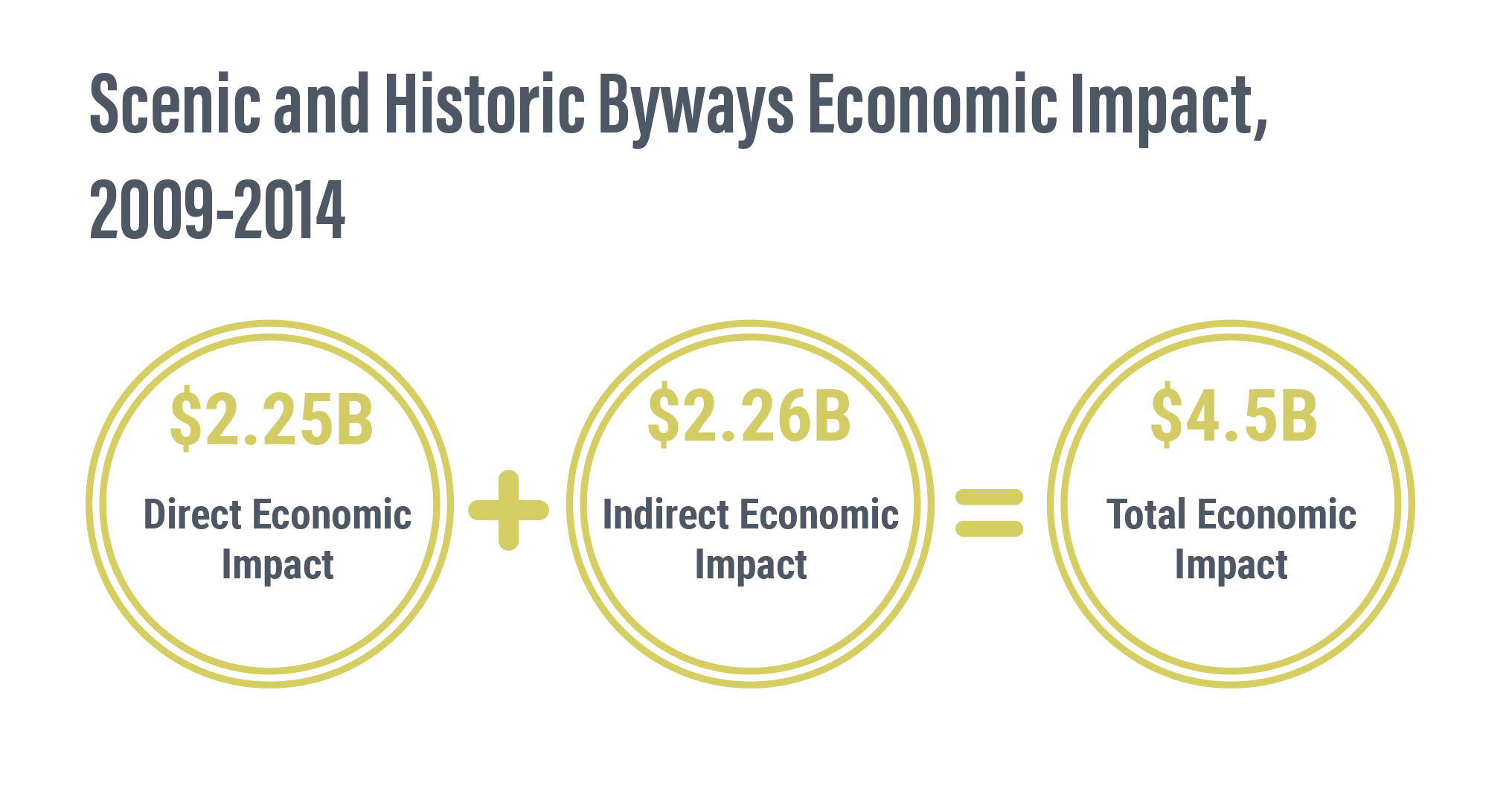
COLORADO’S SCENIC AND HISTORIC BYWAYS & THEIR ECONOMIC IMPACTS, 2009 - 2014
Ski & Outdoor Recreation
Historic preservation plays an important role in other areas of the state’s tourism economy—namely the ski and outdoor recreation industries. Colorado is number one in the nation for overnight ski visits and eighth for outdoor overnight trips. While ski and outdoor recreation tourists may not visit Colorado’s mountain communities solely for their historical and cultural offerings, many enjoy such attractions during their stays. In addition, cultural and heritage tourism provide opportunities for mountain communities to attract tourists during the summer months, with many hosting festivals, concerts, or similar special events in or near their historic cores. Perhaps reflecting the importance of historic preservation to the development of the ski and outdoor recreation industry, many of Colorado’s mountain resort communities, such as Telluride, were some of the first in Colorado to adopt historic preservation ordinances.
Many visitors to Colorado are unwitting heritage tourists. While enjoying recreational outdoor activities, they fall in love with places that exude a subtle sense of history, even if they’re not sure why.
